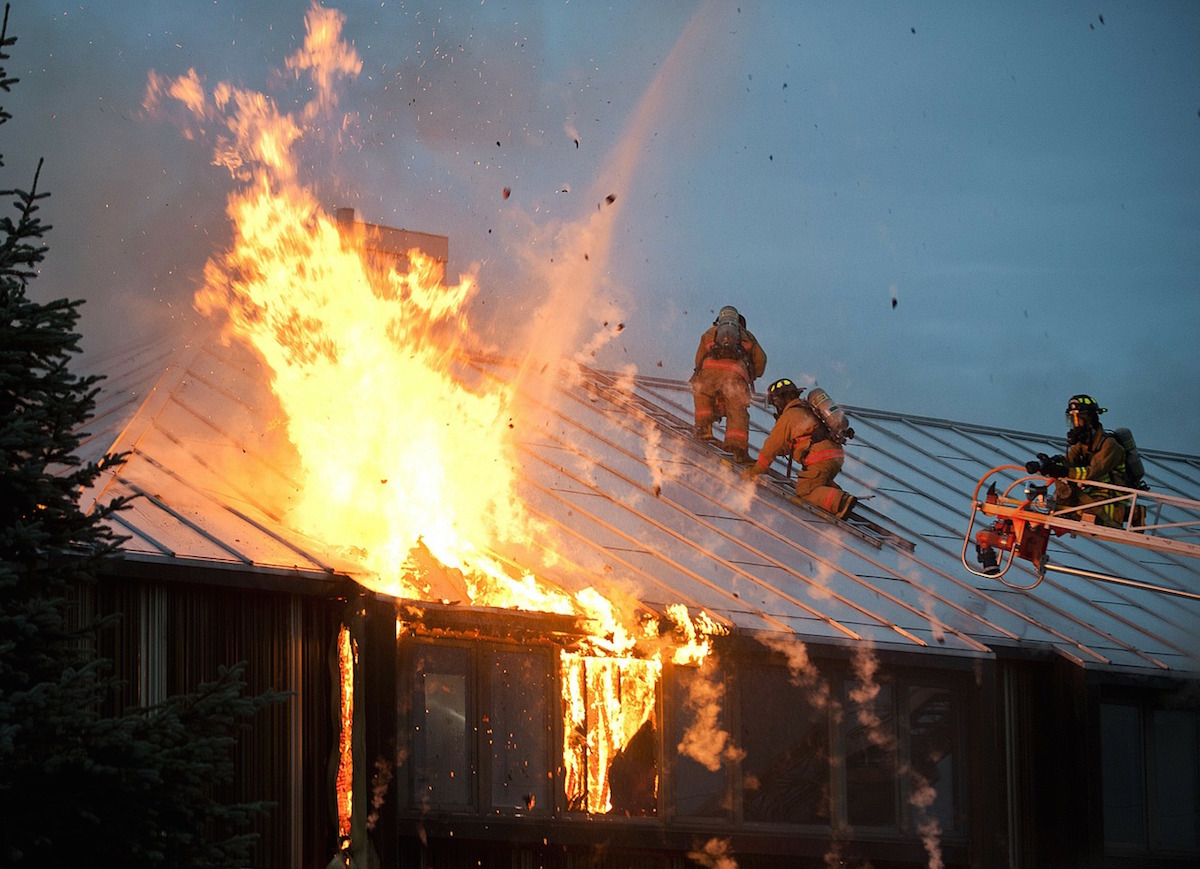In Compliance column in the May/June issue of NFPA Journal, Ron Coté, Principal Life Safety Engineer at the National Fire Protection Agency, debunks two myths regarding NFPA 101, Life Safety Code.
The first myth is that all assembly occupancy rooms with an occupancy load more than 50 must have a second egress door. This is not true, although many do have second exit access doors “in order not to violate the common path of travel limitation,” Coté writes.
For most room locations and arrangements, a second exit access door from the room can be positioned to provide occupants with a second travel path. The presence of the second exit access door can reduce what would otherwise be an excessive common path of travel to one that is within the permitted distance.
Coté also debunks the myth that exit signs are required at exits only. The signs are actually required in three locations: at exits, in the exit access, and in exit access corridors of new construction. They are required in the exit access when the exit or way to reach the exit is not readily apparent, as might be the case where additional turns in the egress path are needed to reach an exit.
They may also be needed when in exit access corridors of new construction no point is in excess of the particular sign’s rated viewing distance or the 100-foot (30-meter) default value, whichever is less, from the nearest sign.
Related Stories
| Sep 8, 2011
USGBC Revises Energy Demand Response Credit
Originally launched in 2010, the revised and enhanced Demand Response Pilot Credit establishes guidelines that are anticipated to increase participation in automated energy demand response programs.
| Sep 8, 2011
Water Safety in Buildings Guide Published by World Health Organization (WHO)
This WHO book provides guidance for managing water supplies in buildings where people may drink water, use water for food preparation, wash, shower, swim or use water for other recreational activities or be exposed to aerosols produced by water-using devices, such as cooling towers.
| Sep 7, 2011
NFPA Fire & Life Safety Conference in December
Presentations on recent Fire Protection Research Foundation projects, how September 11th and the Triangle Shirtwaist Factory fire affected high rise design, and a panel discussion on emerging code issues will be featured at the National Fire Protection Association (NFPA)’s Fire & Life Safety Conference on December 12-14 in Orlando, FL.The meeting will include more than 60 educational sessions in which participants can earn continuing education units (CEUs). Presentations will be led by NFPA staff experts and technical committee members, and will be organized in four tracks – building and life safety, detection and alarm, fire suppression, and codes and standards. For more information, visit www.nfpa.org/FLSCONF.
| Sep 1, 2011
Project Aims to Automate Code Compliance Assessment
FIATECH, a consortium of owners from the industrial, power, and retail markets that build large structures, launched a project this year to validate the use of automation technology for code compliance assessment, and to accelerate the regulatory approval process using building models. Long-term objectives include the development of an extensive, open-source rule set library that is approved by industry and regulatory bodies for use by technology developers and code officials.
| Sep 1, 2011
EPA Says Additional Lead Paint Cleaning Rules Not Necessary
The EPA has concluded that current Lead: Renovation, Repair, and Painting Program (LRRP) cleaning requirements and lead-safe work regulations are sufficient to protect the public from lead dust hazards. “Our members have been instrumental in contacting legislators to detail the detrimental impact of the current LRRP," says Richard Walker, American Architectural Manufacturers Association’s president and CEO. “This collective industry voice has prompted the EPA to make the responsible decision to refrain from adding further, unnecessary costs to homeowners under the current economic climate."http://www.aamanet.org/news/1/10/0/all/603/aama-commends-its-members-congress-for-vacating-lrrp-clearance-rule
| Aug 11, 2010
Best AEC Firms of 2011/12
Later this year, we will launch Best AEC Firms 2012. We’re looking for firms that create truly positive workplaces for their AEC professionals and support staff. Keep an eye on this page for entry information. +







